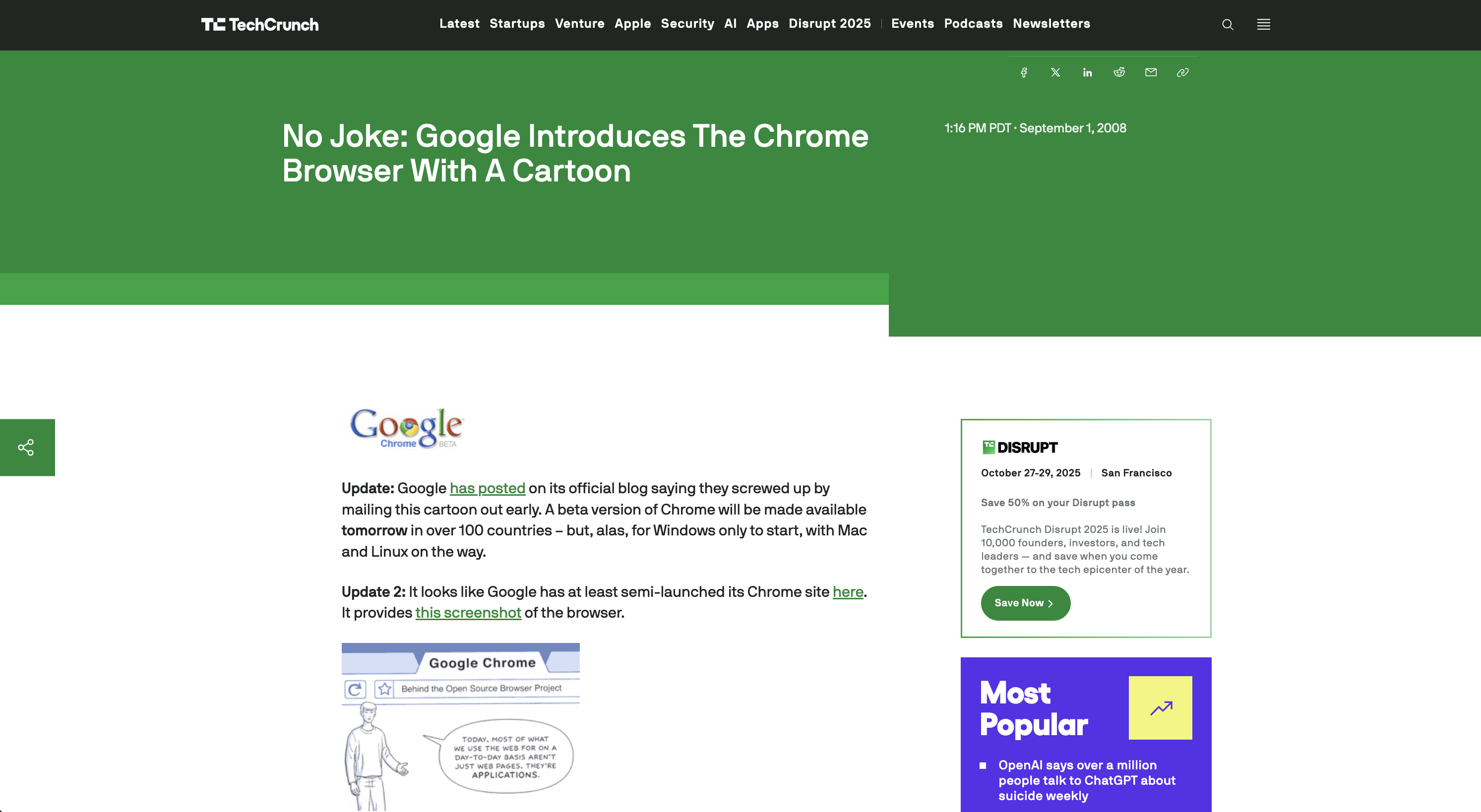
The last few days and weeks have brought a flurry of developments with potentially big implications for our digital lives. Over the summer, Perplexity soft‑launched a new kind of browser, natively integrated with the company’s AI services. At the start of this month (October) they opened access to everyone-unofficially kicking off a new category: AI browsers.
Just under a week ago, OpenAI joined the race by releasing its own Atlas. It also seems only a matter of time before Google rolls out broader AI and Gemini features across its own products (users in the U.S. have been testing some of these since mid‑September). Time will tell whether anyone else jumps in and seriously competes in this emerging category-arguably the most significant since Google Chrome entered the market and went on to dominate for years. Interestingly, in the ongoing antitrust dispute with the DOJ, both Perplexity and OpenAI reportedly expressed interest in acquiring Chrome-at a notional valuation of around $34.5 billion. One can only wonder how the web would look if that had happened.
The web is evolving. It’s not just about visiting websites anymore - it’s about streamlining workflows, boosting performance, and leaning on AI‑powered tools that actually get things done.
Early testers say what’s truly remarkable about Atlas is how well it anticipates what you’re doing. It speeds things up-auto‑logging into familiar sites, proactively fetching the next piece of information you’ll need. In practice, it behaves like an intimate, hyper‑efficient assistant.
That intimacy has a flip side: Atlas asks for very broad permissions-full access to your hard drive, your data, and deep integrations with your workspace.
A few native capabilities that could reshape day‑to‑day browsing:
In short, the strong, everyday integration of ChatGPT reduces context‑switching-at least at first glance.
Unlike Atlas, which excels in conversational flow, Comet is built to ensure that every claim, reference, or fact can be verified and contextualized in real time. It was described by some as designed for readers, researchers, and professionals who value depth and verifiability,
I’d expect early adopters to be people who already rely on AI for research, summarizing, and brainstorming; therefore, freelancers, creators, students, and a slice of folks in tech‑heavy roles. A second wave will likely be younger users; they tend to jump on new tools fastest.
Given ongoing concerns about privacy and security (prompt‑injection is a frequent example), some more cautious users - or anyone handling sensitive data - will likely sit this out for now and watch from the sidelines.
Others will simply wait a bit or run Atlas/Comet alongside their regular browser rather than replacing it outright.
What does that mean for ad tech?
If OpenAI or any other provider aggregates all our data, things get interesting. An intimate, virtual assistant with access to every query, message, page, and piece of history we share (plus anything else we grant) could push advertising and content personalization to heights we haven’t seen before.
Right now, though, it looks more like standard programmatic UX:
Aside from that, it looks that both browsers support third‑party cookies (as Chrome does), which means conventional reach, profiling, and retargeting all work.
From the day of their launch, Adlook has supported ad delivery on AI browsers like Atlas, offering the same targeting and measurement capabilities available across traditional Chrome environments.
Without requiring any additional setup, clients using SMART are already reaching users in these new contexts through programmatic campaigns.
Below a campaign served in Atlas, bridging traditional content and AI-powered browsing:

Notably, neither Atlas nor Comet stands out via the User‑Agent string (within the human interface version), so at the time of writing there’s no straightforward way to target Atlas or Comet users as a distinct “category.”
From our own experience, reaching users who test new tools and use them for “assisted” browsing is fully achievable through traditional programmatic channels. Our platform shows we can do it just as effectively as before while supporting the popular use cases marketers expect.
What’s harder to predict is how things will play out with agentic workflows that run quietly in the background, without direct user interaction.
One factor that could matter: which content gets “suggested” to the user at the end of an AI‑driven analysis - i.e., the sources that the assistant proposes for deeper exploration. On the publisher side, it’s worth looking at ARIA tags/attributes, which OpenAI uses to enhance page understanding and ranking.
To close this section, regardless of the browser, the roadmaps look broadly similar: multi‑profile support, improved tools, and ways for Apps SDK developers to drive better discoverability inside AI‑powered browsers.
No one knows. What we do know is that at Adlook we’re continually implementing support for new features across our platform. If you want to be ready-today-for whatever comes next, and already reach users across the open internet regardless of the tools or channels they choose, get in touch.

Why traditional targeting fails—and how AI-powered content intelligence delivers real engagement without cookies.

Uncover 4 personal care shopper profiles in Brazil and how to activate campaigns with real data and behavior.

CTV CPMs are falling—Adlook reveals why signal gaps are to blame, and what the industry must fix to unlock real value.